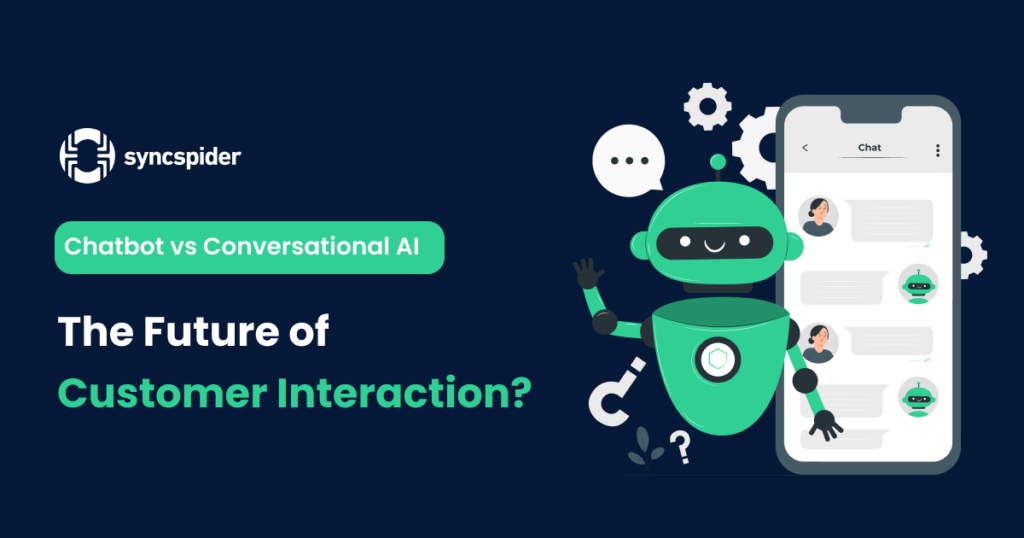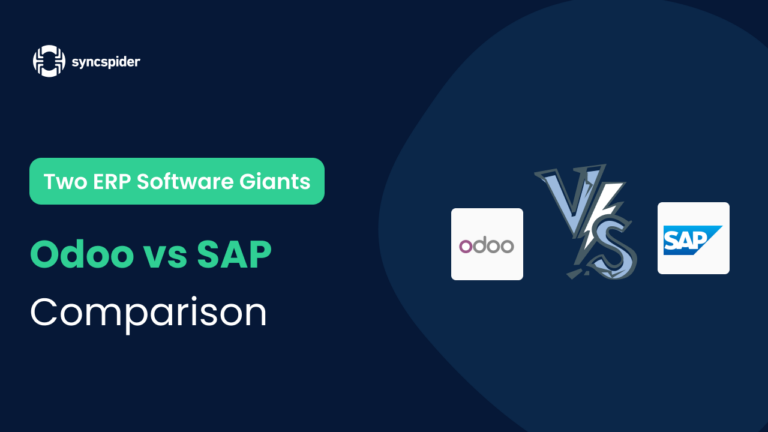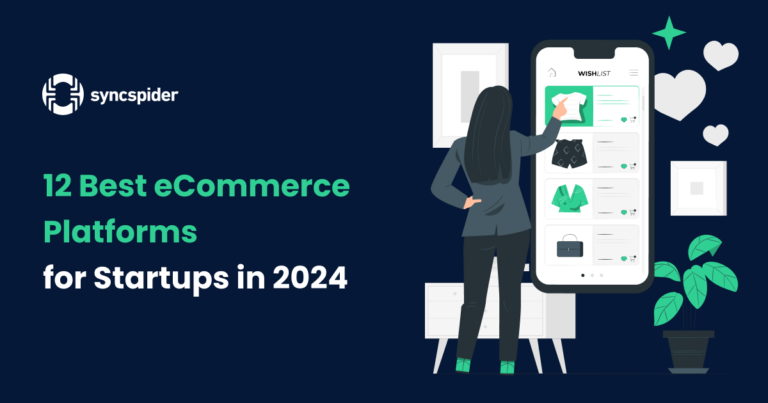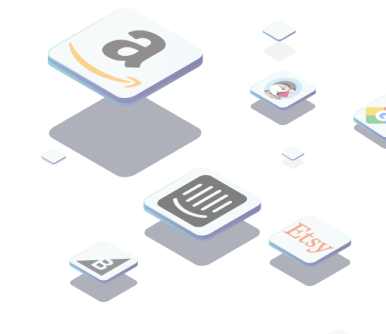Have you ever wondered how we got here? Remember the days when chatbots were introduced? How skeptical we all were, how sloppy they were, and how quickly they found their place in eCommerce and across the internet. But now we have something completely different—a new conversational AI that puts chatbots in the corner. We already know who’s winning, but what’s the difference: chatbot vs conversational AI?
Why am I writing about this? Well, I have first-hand experience with these conversational AI models on Shopify. (Yes, I’m a Shopify fan, don’t mind me.) And if you think chatbots and conversational AI are the same, let me show you how different they are.
Speaking of Shopify, I noticed that not too many online stores have chatbots. And it made me think… why? Why is this not a practice when it comes in handy, especially in e-commerce shops?
Roll up your sleeves, and let’s dig deeper!
Chatbot vs Conversational AI Model
Chatbots were the pioneers of automated customer interaction. They could answer basic questions, provide support, and even process simple transactions. However, they had their limitations. Their interactions often felt scripted and mechanical, leaving much to be desired in terms of user experience.
I can’t forget the situation when I argued with the Grammarly chatbot a few years back when I was trying to reactivate my subscription, and it kept throwing useless links at me. That was one of the worst experiences ever.
Enter Conversational AI
The latest conversational AI models, powered by advanced machine learning algorithms, have taken automated interactions to a whole new level. Unlike traditional chatbots, these AI models can understand context, recognize nuances in language, and provide responses that feel genuinely human. They can handle complex queries, learn from interactions, and continuously improve their performance.
And just to emphasize how far they got, just a few days back, I had a conversation (yes, we can now call it conversation) with Shopify’s virtual Help Center assistant, trying to find a solution for integrating Google Console on my experimental Shopify store, where this virtual assistant firstly talked to me in language that is more tech for my level of knowledge. Then I’ve put a sentence, “Please, I’m a complete dummy for this. Could you explain in steps where I can find it and where to copy the link?” And there it was, with an apology, I got a step-by-step guide (which was accurate) to follow and complete my mission.
I was shocked. For the first time ever, I didn’t have to call the service agent on chat. The chatbot solved my problem.
Real-World Applications
Now imagine how perfect it would be if every e-shop had a conversational AI model. It would be a game-changer. The main advantage is that conversational AI can provide personalized shopping experiences, offer intelligent product recommendations, and even handle customer service inquiries with a level of sophistication that was previously unimaginable. For instance, on Shopify, this conversational AI seamlessly and accurately guides you through the process, regardless of your issue.
And let me tell you, you don’t even feel as if you’re talking to an AI. It feels like talking to another human. And how beneficial would it be for your eCommerce store?
The surprising statistic for me was that, according to Statista, only 9% of e-commerce stores use chatbots on their websites. Why? It may be because classic chatbots were vague in their answers, and the eCommerce business owners didn’t realize yet that this segment had transformed quite a bit.
Now, before you search for the perfect conversational AI model for your eCommerce shop, let’s mark a difference.
Differences Between Classic Chatbots vs Conversational AI Models
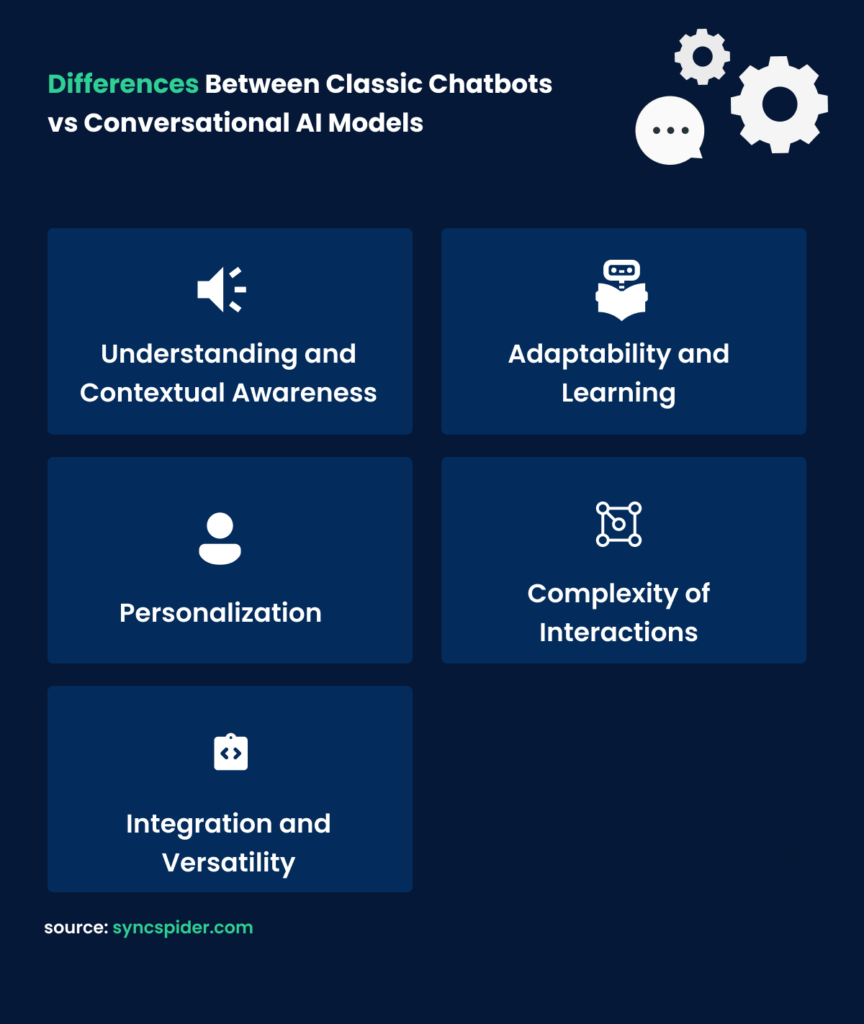
Understanding the key differences between classic chatbots and the new conversational AI models can help us appreciate the significant advancements in this technology and pick the right one for our stores. Let’s break it down:
1. Understanding and Contextual Awareness
- Classic Chatbots: These early bots operated on predefined scripts and rules (they are rule-based chatbots). They could only respond to specific keywords or phrases, often leading to repetitive and frustrating interactions if the user strayed from the expected input.
- Conversational AI Models: Powered by advanced natural language processing (NLP) and machine learning, these AI solutions understand the context and can interpret the meaning behind words. A conversational AI bot can handle open-ended conversations, grasp nuances, and remember previous interactions to provide coherent and contextually relevant responses.
2. Adaptability and Learning
- Classic Chatbots: Their learning capabilities were limited. Any updates or improvements required manual reprogramming by developers, making it challenging to adapt to new queries or scenarios.
- Conversational AI Models: AI bots continuously learn and evolve from each interaction. They utilize machine learning to adapt to new information, improving their responses over time without requiring manual updates. This self-improvement capability makes them far more dynamic and responsive.
3. Personalization
- Classic Chatbots: Basic chatbots provided generic responses that lacked personalization. They treated every user interaction as an isolated event without leveraging user data to tailor responses.
- Conversational AI Models: Conversational AI technology leverages data to offer personalized experiences. They can recommend products based on previous purchases, remember user preferences, and provide tailored suggestions, making the interaction feel more human and engaging.
4. Complexity of Interactions
- Classic Chatbots: Limited to handling simple and straightforward queries. Rule-based chatbot often struggles with multi-step processes or complex questions, leading to dead-ends and user frustration.
- Conversational AI Models: A conversational AI chatbot is capable of managing complex interactions that involve multiple steps or detailed information. They can guide users through intricate processes, answer multi-layered questions, and provide comprehensive support, greatly enhancing user satisfaction.
5. Integration and Versatility
- Classic Chatbots: Primarily used for basic customer service and support tasks. Their integration capabilities were often limited to specific platforms or functions.
- Conversational AI Models: Highly versatile and easily integrated into various platforms and applications. Conversational AI solutions can be used for customer service, sales support, marketing automation, and even internal business processes, offering a wide range of functionalities across different domains.
The leap from classic chatbots to conversational AI models represents a major technological advancement. While chatbots introduced us to the potential of automated interactions, conversational AI models have redefined our expectations, offering smarter, more intuitive, and highly personalized experiences. As we continue to explore the capabilities of these new AI models, the possibilities for enhancing user engagement and operational efficiency are boundless.
The Benefits of Conversational AI Chatbots
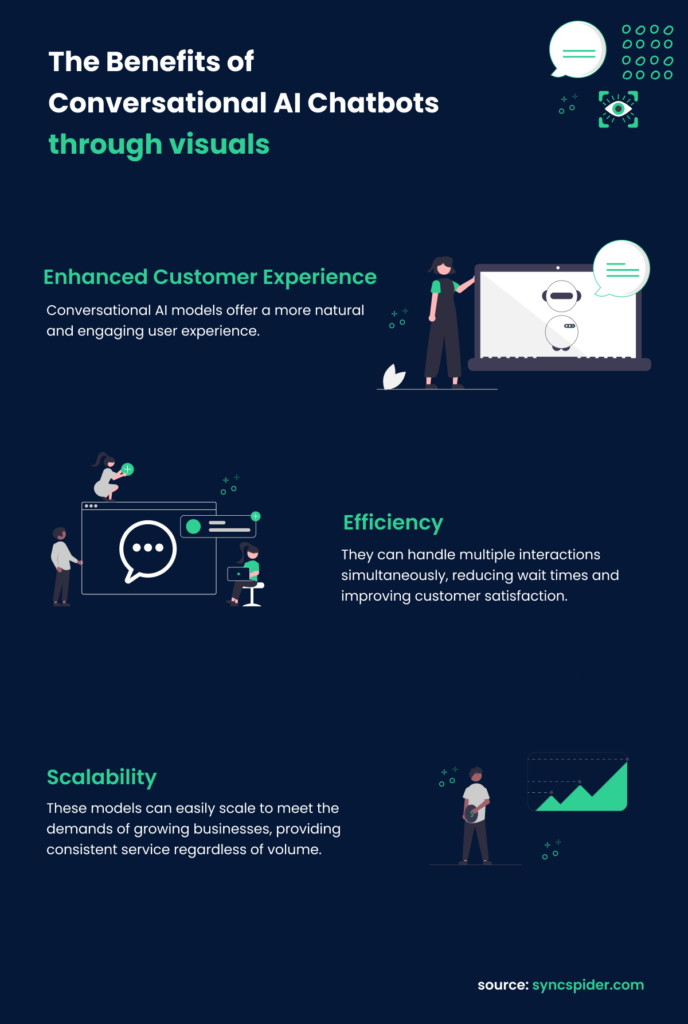
- Enhanced Customer Experience: Conversational AI models offer a more natural and engaging user experience.
- Efficiency: They can handle multiple interactions simultaneously, reducing wait times and improving customer satisfaction.
- Scalability: These models can easily scale to meet the demands of growing businesses, providing consistent service regardless of volume.
How Chatbots and Conversational AI Models Improve Customer Service: Key Metrics
It’s not a secret that lengthy customer service wait times often deter potential buyers who need quick answers before making a purchase decision. eCommerce chatbots help mitigate this issue, enhancing customer satisfaction and boosting sales.
Some data show that effective eCommerce chatbots can:
- Boost online orders by 300%
- Generate 30% more leads
Here are the primary advantages of integrating a chatbot into your eCommerce operations.
Swiftly Address Customer Inquiries
Studies indicate that 81% of customers prefer resolving issues independently before contacting support. eCommerce chatbots cater to this preference while keeping costs in check. They provide:
- A human-like interaction experience
- A straightforward method for addressing common questions
- A cost-saving solution for businesses
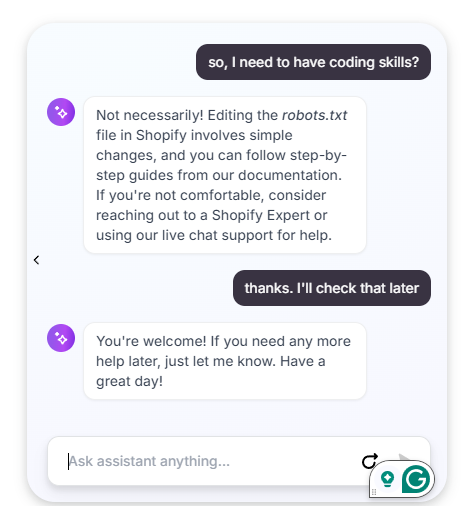
Furthermore, you can program your chatbot to do various things, such as:
- Track orders
- Recommend products
- Offer discount codes
- Collect feedback
- And much more
Enhancing Customer Engagement
We all know that issues like slow websites or errors at checkout can lead to higher cart abandonment rates and unmet customer expectations.
Chatbots can engage customers at critical points in their journey (just like Shopify’s virtual Help Center assistant did in my case), reducing friction and guiding them to the right products or services. For example, a chatbot can offer assistance if a customer lingers on a page without activity.
Behind the scenes, chatbots collect valuable zero-party data about customers to:
- Offer personalized product suggestions
- Direct customers to products or services that suit their needs
- Support them through the sales process, boosting conversion rates
eCommerce chatbots provide a customizable and cost-effective way to attract new customers and increase conversions. They can also be easily used as virtual agents.
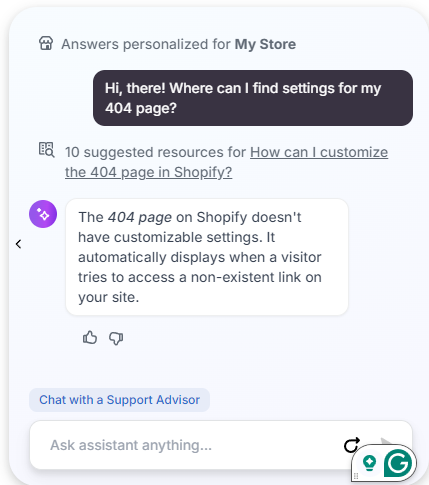
Reducing Cart Abandonment
Now, let’s address the elephant in the room. With cart abandonment rates nearing 70%, eCommerce stores lose billions of potential sales annually. Shoppers who abandoned their carts were almost ready to purchase but encountered issues along the way, such as high prices or lack of free shipping.
Chatbots can significantly improve conversion rates by intervening at crucial moments, building trust, answering questions, and addressing concerns in real time without involving a human agent.
Customizable chatbots can gently remind customers to complete their purchases and support multiple languages for a seamless experience across different regions.
Reducing cart abandonment directly increases revenue from customers who are already interested in your products.
Providing Post-Sale Support
Top-tier chatbots also enhance post-sale support, fostering customer loyalty and satisfaction. They can handle inquiries related to:
- Returns
- Refunds
- Shipping and order status
Additionally, chatbots can offer helpful tips and how-tos for products, ensuring customers make the most of their purchases. Since conversational AI systems are available 24/7, they provide assistance whenever customers need it most.
Monitoring and Improving Chatbot Performance
One significant benefit of chatbots is their ability to provide data on customer interactions. Analyzing this data helps improve the chatbot’s functionality and the overall customer experience.
Interestingly, 40% of web users don’t mind whether they receive help from a human or a bot as long as their issue is resolved. Regularly monitoring your chatbot’s performance ensures it effectively meets customer needs.
Leveraging Customer Data
Chatbots gather customer data, creating comprehensive profiles. By utilizing this data, businesses can:
- Gain deeper insights into customer behavior
- Enhance the overall customer experience
- Suggest products or services that address specific customer pain points
The Best-Rated Conversational AI Chatbot Solutions in 2024
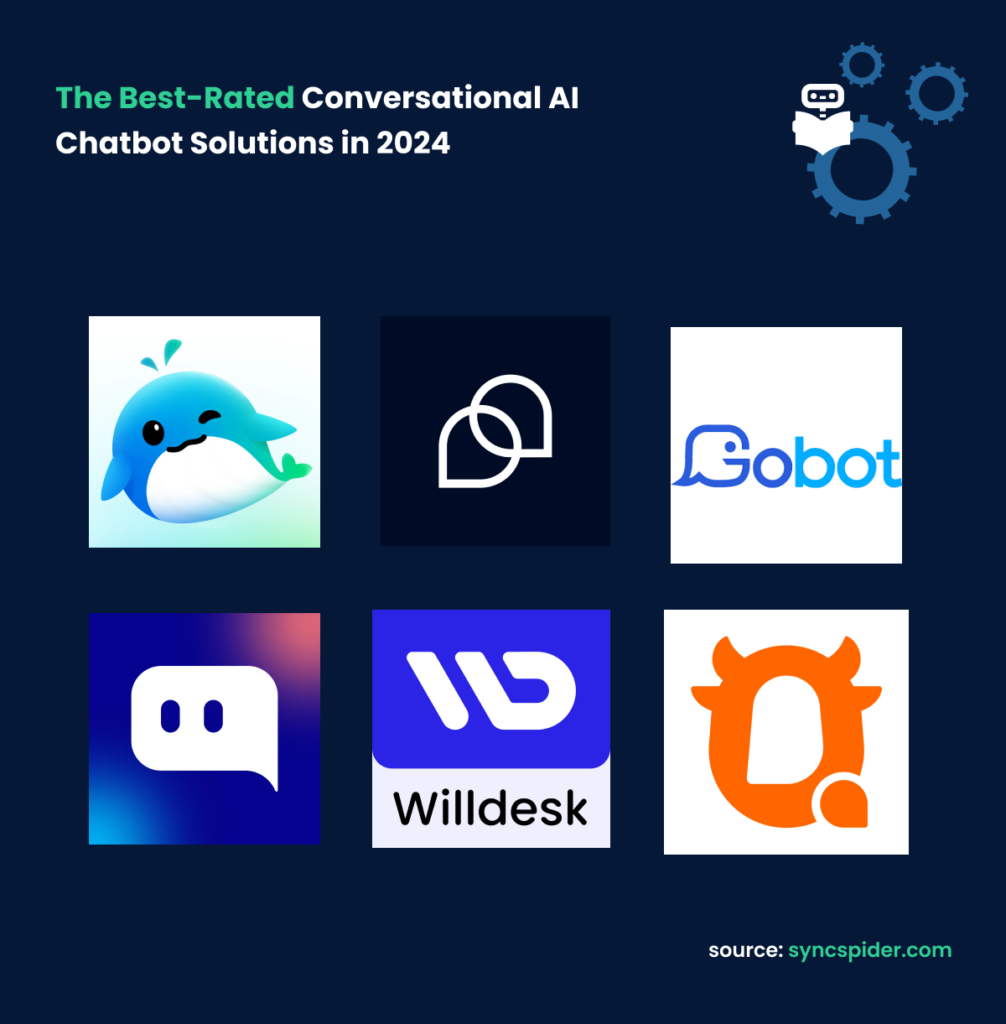
So, tons of chatbot solutions are waiting for you to try them. I’ve shortened the process, but don’t let it stop you from checking the best type of conversational AI for customers on your own. I researched a bit of reviewing platforms just to check what reviews have the most popular ones, and here’s the list of six best-reviewed chatbots for Shopify stores, based on reviews and features from the Shopify App Store:
BestChat
- Features: BestChat offers AI-powered live chat and chatbot solutions that provide 24/7 customer support. It includes self-learning AI, real-time Shopify integration, and customizable chat interfaces. The app helps boost sales and customer satisfaction by handling routine queries and supporting seamless chatbot-to-agent transitions.
- Pricing: Free plan available, with paid plans starting at $10/month.
- Rating: 4.8 stars from 132 reviews.
- Integrations: Works with OpenAI, ChatGPT, WhatsApp, and Instagram.
- Highlights: High customization, real-time data insights, multilingual support.
- Source: BestChat on Shopify
Tidio
- Features: Tidio combines live chat with AI chatbots, providing instant customer support and increasing revenue. It supports multiple languages, integrates with social media, and offers a mobile app for managing chats on the go.
- Pricing: Free plan available, with paid plans starting at $29/month.
- Rating: 4.7 stars from 1,874 reviews.
- Integrations: Integrates with Zendesk, Mailchimp, Google Analytics, and more.
- Highlights: Easy setup, high customization, frequent updates.
- Source: Tidio on Shopify
Gobot
- Features: Gobot offers AI-guided shopping quizzes and support chatbots to enhance customer engagement and boost conversions. It automates repetitive support tasks and provides robust product recommendation logic.
- Pricing: Free for the first 5,000 engagements, with paid plans available.
- Rating: 4.6 stars from 101 reviews.
- Integrations: Works with Klaviyo, Drip, Attentive, and Zendesk.
- Highlights: User-friendly interface, customizable features, valuable analytics.
- Source: Gobot on Shopify
Chatty: Livechat Helpdesk, FAQ
- Features: Chatty provides a smart chat box with FAQ automation, live chat, order tracking, and WhatsApp support. It includes customizable themes, multi-language support, and integration with ChatGPT.
- Pricing: Free.
- Rating: 5.0 stars from 1,679 reviews.
- Highlights: User-friendly interface, easy setup, customizable features, reliable performance, and excellent customer support.
- Source: Chatty on Shopify
Self FAQ
- Features: Self FAQ automates customer support with a FAQ bot that answers common questions. It integrates with your store to provide instant, accurate responses, reducing the need for live agents.
- Pricing: Free plan available, with premium features at $10/month.
- Rating: 4.9 stars from 1,123 reviews.
- Highlights: Efficient customer service automation, easy to set up, customizable FAQs, and reliable performance.
- Source: Self FAQ on Shopify
QuickCEP
- Features: QuickCEP offers AI-driven chatbots and CRM integration, providing personalized customer service and engagement. It features advanced analytics, marketing automation, and seamless integration with Shopify.
- Pricing: Free plan available, with advanced features starting at $20/month.
- Rating: 4.8 stars from 756 reviews.
- Highlights: Robust CRM integration, advanced analytics, marketing automation, and efficient customer service.
- Source: QuickCEP on Shopify
Choosing the right chatbot for your eCommerce store requires careful consideration and trial and error. You might also need an integration tool, such as SyncSpider, to connect your chatbot with analytics and other tools you use (perhaps CRMs or a simple Google Sheet, just to keep track of everything).
Integrating Chatbots & Conversational AI Models on Your eCommerce Website
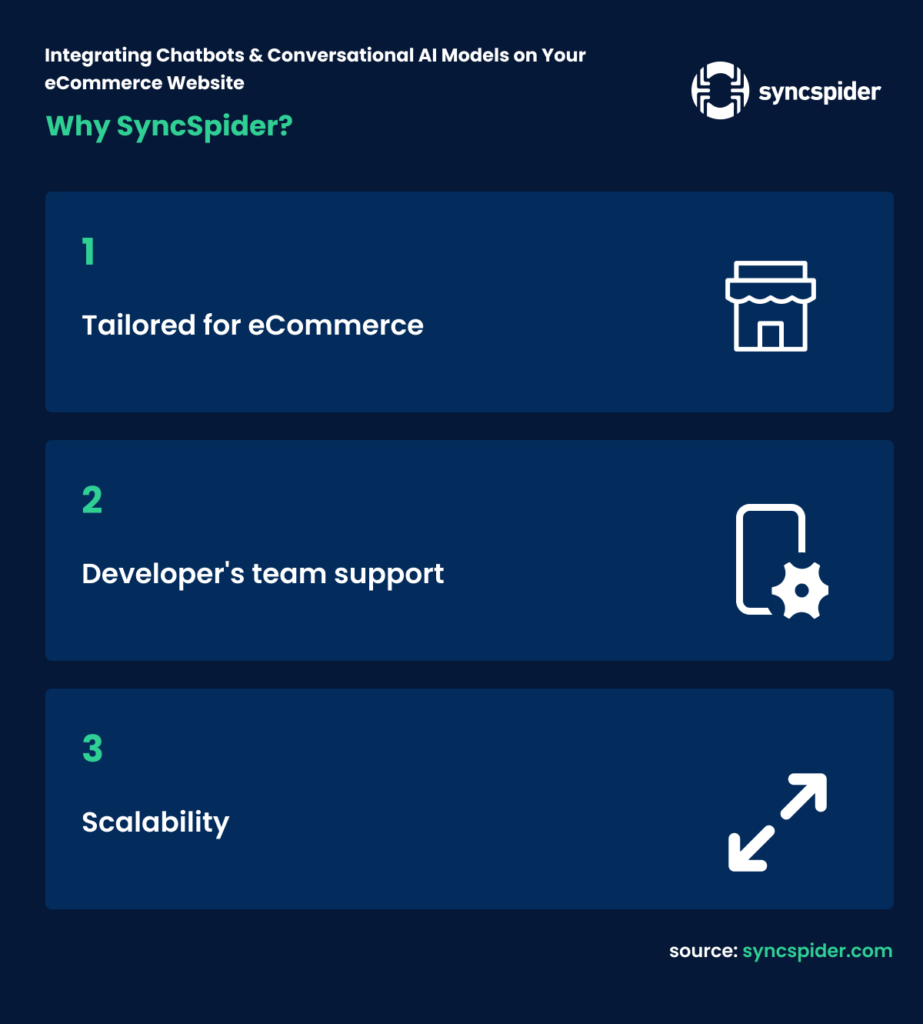
So, you’re interested and want the perfect solution for your eCommerce shop, but you’re wondering if the existing software chatbot solutions could be integrated within your website (and you don’t have tech skills).
In that case, the best thing is to integrate the chatbot using an integration tool like SyncSpider.
Why SyncSpider?
- Tailored for eCommerce: SyncSpider understands the unique needs of online retailers. It provides specialized connectors that make integrating your chatbots smooth and efficient, whether using Shopify, WooCommerce, or another platform.
- Developer’s team support: SyncSpider offers pre-built connectors and workflows that simplify integration. But if you are not tech-savvy, you can always contact our development team, who will set up your workflows.
- Scalability: As your business grows, SyncSpider scales effortlessly. It ensures your AI model or chatbot can handle increased traffic and more complex queries, providing consistent performance regardless of volume.
Conclusion
While chatbots laid the foundation, conversational AI models are building the future. They are not just a replacement but an evolution, offering capabilities far surpassing their predecessors. For businesses looking to stay ahead in the competitive eCommerce landscape, embracing these new AI technologies is no longer optional – it’s essential.
So, chatbot vs conversational AI model? Which one should you choose for your business? Whatever option you use is okay as long as it fulfills its purpose—more happy customers. Use it to increase your sales and provide a better shopping experience for your customers. It’s an exciting time for technology and e-commerce, and I can’t wait to see where we go from here.
Kristina Radosavljević
Content writer at SyncSpider
Kristina, a content writing veteran with 15 years of experience, specializes in the realms of IT, eCommerce, and the evolving landscapes of integration and automation, deftly weaving complex concepts into compelling narratives.

